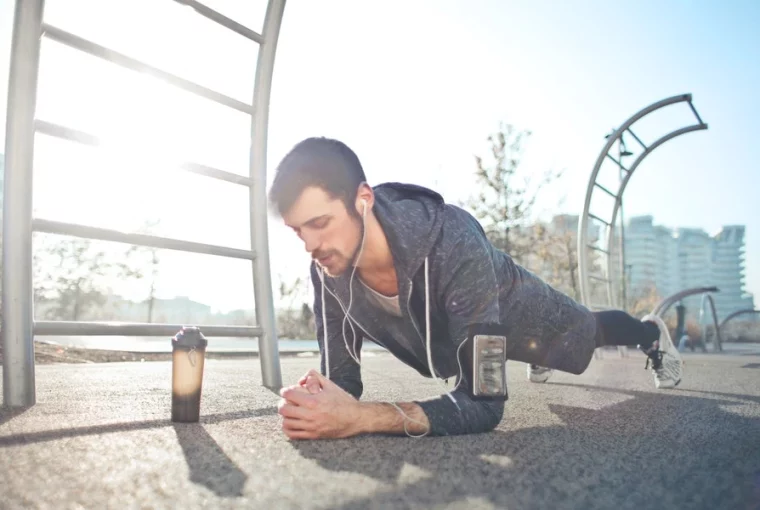When warm weather hits and temperatures soar into the high 90s, it can be challenging to exercise outdoors. Many people want to continue their regular workout routines, but the sun and heat make it difficult and often dangerous to push your physical limits.
Thankfully, you can take several steps to beat the heat and still get in an effective workout. Explore the following seven ways you can work out during the hottest times of the year safely and comfortably.
1. Stay Hydrated
You must stay hydrated no matter what exercise you do outside during warm weather. Too little water in your body can turn serious very fast on hot days. Physical exertion can lead to blackouts, fainting or even more serious medical complications like kidney failure.
The average adult should have about ¼ gallon of water every hour when exercising outside on hot days to ensure adequate hydration. This amount should keep you well hydrated even during an intense workout session. You can also monitor your vital signs using a waterproof heart rate monitor to alert you to symptoms of dehydration.
Water is always preferred to sports drinks because their sugar content can reduce their effectiveness. However, the occasional sports drink can be an excellent supplementary beverage because it contains electrolytes crucial for optimal hydration. It is also important not to over hydrate as that can cause a drop in blood salt concentration, so drink less than 48 ounces every hour.
2. Use Sunscreen
The sun can be relentless on hot days, and it’s vital to protect yourself against UV rays when you exercise outdoors in warm weather. The FDA recommends applying sunscreen on all exposed skin 15 minutes before going outside and choosing an SPF that matches your skin tone and length of time outdoors. Those with fairer skin should always choose a higher SPF, and everyone should choose a high SPF if they intend to spend extended amounts of time outside.
It is vital to reapply sunscreen throughout your time outdoors. You should reapply every two hours, especially if there is little to no shade for relief. All sunscreen will wash off with water or sweat, so reapply your sunscreen more often if you are sweating profusely or wiping your face with a towel or shirt.
3. Eat A Light, Nutritious Meal
Any exercise regimen should be paired with a nutritious diet to ensure your body has all the vitamins and minerals you need for your workout. It is particularly important to eat the right meal before your workout as food can impact your body’s thermoregulation on warm days.
Pair your warm-weather workout with a light, nutritious meal. Avoid fatty, oily or heavy foods like dairy and red meat. Focus on whole grains like brown rice and quinoa, fruits and berries like cucumbers and bananas and leafy vegetables like kale and spinach.
Opt for salads with varied fruit and vegetables paired with a light protein like whitefish. Add a healthy carbohydrate like a small portion of whole grain rice, or choose a healthy soup like gazpacho.
4. Avoid the Heat of the Day
One of the easiest ways to beat the heat is to lay low during the hottest part of the day and get active at dawn and dusk. Avoiding the hottest part of the day is crucial to exercising safely during warm weather.
Working out at dawn and dusk may benefit your sleep and energy levels. Working at dawn can help you sleep better, and it might leave you with increased energy levels for the rest of the day. However, some studies have shown that people work out more effectively in the evenings due to elevated levels of certain hormones.
Consider your daily routine when choosing between a morning or evening workout. If you are more likely to wake up early and have time, opt for an outside run at dawn; however, if you have availability and energy in the evenings, take advantage of this time’s cooler temperatures.
5. Wear the Right Clothes
Wearing the right clothes is crucial to staying comfortable and exercising safely in hot temperatures. Wear light materials in light colors, preferably colors that reflect the sun, like whites or pastels. Choose moisture-wicking clothes to help soak up excess sweat, but avoid wearing heavy cotton or fleece. Choose clothes that cover as much of your body as possible. Also, wear clothes with an airy, loose fit that allow for suitable ventilation.
Project your electronic workout devices from humidity and sweat. Many people like to wear an armband for their phone, particularly if their phone bounces around in their loose-fitting gear. These armbands can also help keep sweat away from any electronics, keeping them clean and safe from moisture.
6. Reduce Your Normal Routine
Due to the risks associated with working out in hot and humid conditions, reducing your regular workout routine during the hottest months of the year might be prudent. In some places, the temperatures remain dangerously high at night, making working out inadvisable even with all the best precautions.
If you’re living under a heat advisory, you must err on the side of caution and limit your outdoor exposure. Consider moving your workout inside or reducing the intensity of an outdoor workout. Risking a tough workout in punishing heat is often counterproductive or can adversely affect your health.
7. Listen to Your Body
One of the most crucial things you must do if you decide to exercise outdoors during warmer weather is listen carefully to your body. If you are thirsty, suddenly tired, dizzy or fatigued, you may be experiencing symptoms of dehydration. In high heat and high humidity situations, dehydration can happen quickly and require hospitalization.
People often ignore heat emergency symptoms, brushing them off as minor or part of a normal workout strain. Consider wearing a heart rate monitor to track your vitals and know when you need to take a drink or rest.
For example, a monitor can tell you if your heart rate is getting too high, so you know to reduce activity and take a break. This can often mean the difference between an intense workout and an ambulance ride to the ER in hot weather.
Stay Fit All Year Long
An effective outdoor workout is one way to stay fit and in shape. Many people get set in their routines and find that habit is the key to hitting their fitness goals. Warm weather and its challenges might require slight changes to stay safe and healthy, but if you listen to your body and adequately prepare, you can still hit your fitness goals no matter the weather.




